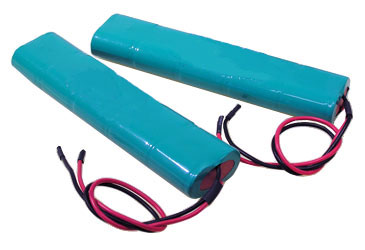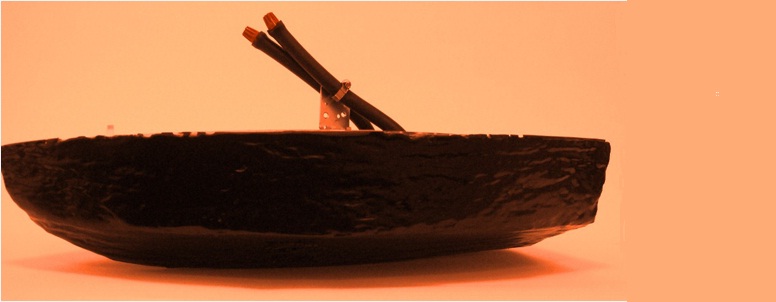
Power system
Since we wanted the boat to be untethered, it was important to choose batteries that would be large enough to satisfy our needs. The two pumps drew 3A each at 12V, We then rounded up that 72W power consumption to 80W and begun searching for batteries.
From previous projects, we had experience buying batteries from Battery Space.com. There were a few different types of batteries that we could have chosen: lithium polymer, NiMH, lithium ion, lead or alkaline cells. We wanted batteries that would be rechargable, and would not explode on contact with water. Weight was not large concern of ours as the boat could take a load of 20 pounds. However, we were wary of bulk, as it would be difficult to route our hydraulic system if there was a large battery in the way.
Based on those considerations, we settled on RA-H2/3A10I5WRx2, a pair of 12V 1200mAh NiMH batteries. This gave us an approximate run time of 24 mins which seems sufficient. We padded down our runtimes to 12 mins as we knew running our batteries down completely would reduce their life. The other benefit of our batteries were their flat shape (5-2/3" L x 1-3/8"W x 3/4" H) which made it easy to fit them into empty space on the boat. We allocated space for two pairs of batteries, but only ended up buying one pair. In the future, we could get the second pair which would increase the boat's runtime.
The Sabertooth motor controller could be directly fed the 12V output from the batteries. That made it trivial to wire the batteries to the motor controller. However, the RC servos and the rest of the electronics required a 5V signal.
We thought of being clever and using the 5V output from the Sabertooth motor controller. Unfortunately when we ran our pumps and then tried to actuate one of the valves, the pumps would die. When the valves were released, the pumps would come back to life. This bewildered us, until we checked the documentation for the motor controller again. We found that the 5V output was meant for low powered applications only, like RC radios. It was current limited to 20mA, which corresponds well to what we observed.
With regard to this, we decided to separate our two batteries to form two different power circuits, one for 12V and the motor controller, and the other for 5V. We used a LM7805 voltage regulator to step down the voltage from the battery. This was suboptimal as the power loss from the regulator is proportional to the voltage difference and the current draw, both of which are large. We did not even attach a heat sink to the back of the regulator, which would help dissipate some of the heat generated. Definitely in a future iteration, a switching regulator which has efficiencies of about 80% should be used.

